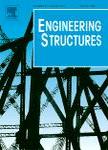版权所有:内蒙古大学图书馆 技术提供:维普资讯• 智图
内蒙古自治区呼和浩特市赛罕区大学西街235号 邮编: 010021

作者机构:Tongji Univ Coll Civil Engn Shanghai 200092 Peoples R China Shanghai Inst Architectural Design & Res Co Ltd Shanghai 200041 Peoples R China Shanghai Engn Res Ctr Assembly Bldg Technol Integr Shanghai 200011 Peoples R China
出 版 物:《ENGINEERING STRUCTURES》 (Eng. Struct.)
年 卷 期:2025年第329卷
核心收录:
学科分类:08[工学] 081402[工学-结构工程] 081304[工学-建筑技术科学] 0813[工学-建筑学] 0814[工学-土木工程]
基 金:National Natural Science Foundation of China
主 题:Q355 BM-HZA-WM Tension Shear And combined stress conditions Shear-modified GTN model PSO algorithm Damage evolution and fracture prediction
摘 要:Due to complex stress conditions, welded joints in steel and concrete-filled steel tubular trusses are considered weak parts and are susceptible to failure by fracture. To investigate the ductile fracture behavior of steel tubular welded joints under a combination of tension and shear, this study took 36 specimens from the base/tube metal (BM), heat-affected zone (HAZ) and weld metal (WM) in welded areas. The fracture behavior of five kinds of specimens were compared. Then, to simulate fracture patterns of specimens, this study developed a new Shear- Modified GTN model (SMGTN), which was based on two types of damage variables: tension and shear. The particle swarm optimization (PSO) algorithm was employed to calibrate SMGTN model parameters. Finally, the stress conditions, damage, and fracture patterns of various specimens were analyzed. The result demonstrated that the larger the radius or shear center rotation angle of notched specimens, the larger the fracture displacement. The materials in BM, HAZ, and WM regions exhibited different ductile behavior under different stress conditions. The calibrated parameters of SMGTN model in this study accurately predicted the fracture displacement and development patterns in the BM, HAZ, and WM regions.